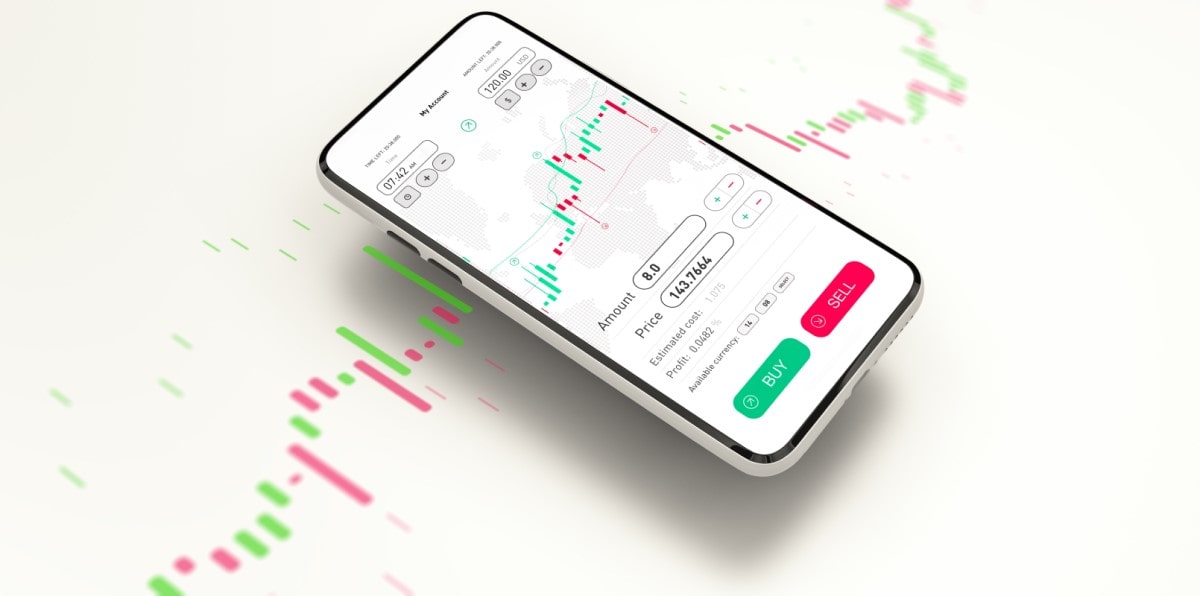

What Is Forex Hedging?
The first instance of financial hedging occurred in the 19th century in agricultural futures markets. What does it look like now, and how can one use it properly? Let's analyse the ins and outs of hedging and what strategies you can implement to protect your funds from pricing fluctuations.
What Is Hedging and How Does It Work?
Hedging means investing in trades that will protect your funds from risky situations. Technically speaking, you would make offsetting trades in assets with negative correlations. It means that one asset decreases as the other increases, and vice versa. Put differently, one investment can be hedged by another trade in the opposite direction.
This method is an unspoken rule among different types of traders and investors. Individual traders, portfolio managers and corporations all use hedging techniques to varying degrees.
Hedging is meant to reduce the risk of adverse price movements. Even though it can't prevent feared events from happening, it prepares you to deal with the consequences better. The impact of an adverse event will be reduced, and your losses will be limited to a known amount.
What Is Hedging in Forex?

A forex trader can create a 'hedge' using a variety of methods. You can open a partial hedging position to diffuse the impact of negative market moves to some extent. Alternatively, you can carry out a complete hedge to fully mitigate your portfolio's exposure to fluctuating prices. You can also use different financial instruments, such as futures or options.
An important thing to note about risk reduction with hedging is that it also implies a decrease in profits. Naturally, risk management isn't free. This technique doesn't earn you money but instead minimises your losses. If your initial investment makes money, you'll lose on the other investment that you hedge with. And the other way around, if the second investment brings profit, the initial one loses.
For example, let's imagine you have the following open positions:
You've not been planning to close these trades, but you're sensing possible fluctuations with the US dollar because of certain political events. Instead of closing your existing trades, you take on an additional position, selling USD/GBP. It reduces your risk since you:
- Sell US dollars to buy pounds
- Have a long USD trade and short GBP.
If you want to entirely remove your exposure to the dollar by selling two lots of GBP/USD, it will affect your exposure to GBP, which could turn out to be positive. Your decision depends on your risk tolerance.
Advantages and Disadvantages of Hedging

Just like any trading tactic, hedging comes with a set of benefits and some drawbacks. In some cases, it pays off, whereas, in others, it doesn't make sense. Before you can make an informed decision, let's take a closer look at arguments in favour and against this method.
|
Advantages |
Disadvantages |
|
Limits losses |
Eats up a portion of profits |
|
Locks profit |
Requires more capital or balance |
|
Increases liquidity in financial markets |
Little benefits for sideway markets |
|
Helps practice complex options safely |
Requires good trading skills |
|
Saves time for long-term traders |
Not all risks can be hedged |
Forex Hedging Strategies
All hedging strategies are designed to minimise risks of adverse price movements in one direction or another. However, every strategy approaches this issue differently. Here are some of the most common strategies you can use in your trading activity.

Futures Contracts
Futures are one of the most commonly used derivatives for hedging, especially by companies or corporations, to minimise their risk exposure.
Let's say there's an American-based company that is about to receive euros in several months. They can sell euro futures contracts on the exchange for the amount they are expected to receive. A US company doesn't need euros, which is why the move is justified. Plus, the company may want to have a locked-in rate for the euros to protect itself from foreign exchange risk.
By the time the receipt day arrives, there might be two possible outcomes. If the euro drops in value, the company's funds are protected since the transaction will be executed at the previous price. But if the euro appreciates, it'll have lost an opportunity to profit. So, before hedging, the company needs to decide which outcome is more important.
Forward Contracts
Another prominent hedging tool is forward contracts, which work very similarly to futures. The main differences are that forwards imply a private contract between parties rather than an exchange, and the contract isn't standardised.
Let's say company A buys AUD $10,000 for JPY from company B at a 74.9 rate, and the maturity date of the contract is by the end of the year. Some businesses, especially the growing ones, can't always predict and specify the time for settlement. Then they set up a flexible forward contract, which gives them the option of accessing a portion of the total value at any time before the final settlement date.
Company A may draw down from the contract several times by the end of the year in $2,000 instalments. Despite currency fluctuations taking place within the year, the company will eventually buy JPY 749,000 for AUD $10,000 at the locked-in rate.
Direct Hedging
This strategy requires you to open two positions on the same currency pair in direct opposition to each other for the same period. You may have opened a long position on a pair, so you'll need to enter a sporting trade for that asset.
Instead of exiting a position in fear of an adverse movement, you open another one and have two open positions at the same time. When strong market fluctuations die down, let's say after a postnews period, you can exit the hedging position.
For example, you have a long position on the AUD/USD currency pair, and you expect a short-term drop in the value of the Australian dollar. In such a case, you can enter a short position on the same pair to offset your losses just in case.
Pair Hedging
With a pair hedge, you open two positions on different currency pairs. The first position should be on a pair that is rising, and the second one should be losing in value. These two positions automatically create a hedge since they're unlikely to be both losing.
To get into more details, these two opportunities should be almost identical and trading at irregular price points. Find undervalued and overvalued currencies to benefit from them moving closer to their fair pricing.
Make sure to find currencies that are in so-called "asset correlation", meaning they're considered to be in a close relationship or interdependent. For example, a Generalised Rule Induction (GRI) methodology indicates a correlation between Australian and Japanese markets. So, whenever the currencies move in opposite directions, you can take advantage of that.
Conclusion
Overall, any trader, big or small, institutional or private, investing or speculative, will want to limit their risks in any financial market. Such a volatile market as forex requires risk management techniques even more so. You can use many hedging strategies, and the choice ultimately depends on your trading preferences.
Unfortunately, no method can protect your profits, so trading will always bear some degree of risk. Make sure to constantly learn about forex and improve your skills to make sound decisions. If you want to experiment with forex CFDs risk-free and practice in real market conditions, set up a Libertex demo account. Our platform allows you to try out different strategies for CFD trading to find the right one for you and maximise your potential future success.
Disclaimer: The information in this article is not intended to be and does not constitute investment advice or any other form of advice or recommendation of any sort offered or endorsed by Libertex. Past performance does not guarantee future results.
Why trade with Libertex?
- Get access to a free demo account free of charge.
- Enjoy technical support from an operator 5 days a week, from 9 a.m. to 9 p.m. (Central European Standard Time).
- Use a multiplier of up to 1:30 (for retail clients).
- Operate on a platform for any device: Libertex and MetaTrader.